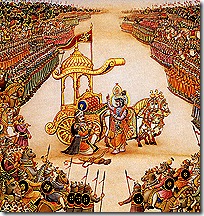A few months after the federal Government Accountability Office (GAO) issued a report on the use of psychoactive drugs by children in foster care in five states, a national study from PolicyLab at The Children's Hospital of Philadelphia describes prescription patterns over time in 48 states. The updated findings show the percentage of children in foster care taking antipsychotics--a class of psychoactive drugs associated with serious side effects for children-- continued to climb in the last decade. At the same time, a slight decline was seen in the use of other psychoactive medications, including the percentage of children receiving 3 or more classes of these medications at once (polypharmacy).
As public scrutiny has increased about the use of psychoactive medication by children over the past decade, children in foster care continue to be prescribed these drugs at exceptionally high rates compared with the general population of U.S. children. According to the PolicyLab study, 1 in 10 school-aged children (aged 6-11) and 1 in 6 adolescents (aged 12-18) in foster care were taking antipsychotics by 2007.
The research team looked at the 686,000 foster-care children enrolled in Medicaid annually in 48 states from 2002-2007, and saw that both overall psychoactive use and polypharmacy-- the practice of prescribing multiple classes of psychoactive drugs at once-- increased from 2002 to 2004, and then began to decline from 2005 to 2007. Prescriptions for antipsychotics, on the other hand, increased each year from 2002 to 2007.
"While it is encouraging to see fewer kids being prescribed multiple classes of drugs, and--to some degree--a slowing rate of growth in the use of antipsychotics by 2007, these medications are still being prescribed much too frequently to children in the foster care system," said David Rubin,MD, MSCE, one of the study's authors and Director of PolicyLab.
Previous studies have established that children in foster care experience trauma and behavioral problems at higher rates than other children, and therefore use mental health services-- including psychoactive medications-- more frequently. Recent research demonstrating serious side effects of these medications in children has focused attention on their use and prompted policy evaluation at both the federal and state level, particularly among high-risk populations like children in foster care.
"We're not saying these medications should never be used for children, but the high rate at which they're used by children in foster care indicates that other interventions and supports, such as trauma-based counseling, may not be in place for them. In other words, health care providers may not have other, non-medication, tools to offer families dealing with mental health concerns," said Rubin. "Responding to high and growing levels of antipsychotic use will not simply require efforts to restrict their use, but calls for larger investments in mental health programs that help these children cope with trauma psychologically."
Prescription rates for both antipsychotic use and polypharmacy varied widely from state to state. Over the six-year period, antipsychotic use increased in all but three states. Conversely, 18 states showed an increase in polypharmacy, while 19 states showed decline and 11 no change. In 2007, states reported prescriptions of antipsychotics ranging from 2.8 percent to 21.7 percent of the foster care population, and from 0.5 percent to 13.6 percent for children receiving multiple classes of psychoactive drugs. The authors note, however, that it's not possible to use this study to compare states against one another.
"In illustrating both the national and state-specific trends in the use of psychoactive medications over time, we hope to provide a resource to officials at both the federal and state levels to help identify progress and prioritize intervention areas," noted Meredith Matone, MHS, a research scientist at PolicyLab who co-authored the study currently published online in the journal Children and Youth Services Review.
Bryan Samuels, Commissioner of the Administration on Children, Youth and Families (ACYF), said "the study's findings contribute to ongoing Federal efforts to improve the oversight and monitoring of psychoactive medications by providing a new snapshot in time on how these drugs were used in almost every state in the nation." ACYF, part of the U.S. Department of Health and Human Services, works across federal agencies and with the States to use the latest data and research to design and deliver the best health care services for vulnerable children.
In August, ACYF will bring child welfare, mental health, and Medicaid leaders from all 50 States, DC, and Puerto Rico together to address the appropriate use of psychoactive medications in state foster care programs.
Provided by Children's Hospital of Philadelphia
"New research expands understanding of psychoactive medication use among children in foster care." April 30th, 2012.http://medicalxpress.com/news/2012-04-psychoactive-medication-children-foster.html
Posted by
Robert Karl Stonjek
Robert Karl Stonjek




































 “The Vedic literatures composed by the omniscient Mahamuni Vyasadeva are evidence of all spiritual existence. Only through these revealed scriptures can all conditioned souls attain knowledge.” (Lord Chaitanya, Chaitanya Charitamrita, Madhya 20.353)
“The Vedic literatures composed by the omniscient Mahamuni Vyasadeva are evidence of all spiritual existence. Only through these revealed scriptures can all conditioned souls attain knowledge.” (Lord Chaitanya, Chaitanya Charitamrita, Madhya 20.353) The best combination is when you have an inquisitive person of a saintly character who meets the right set of information. That information must date back to the beginning of time and be presented through the mouth of a flawless person. The only being that cannot fall down is the Supreme Lord, who is thus known as Achyuta in the Vedic tradition. He has thousands of names which try to address His specific features, though there are too many glorious attributes to describe.
The best combination is when you have an inquisitive person of a saintly character who meets the right set of information. That information must date back to the beginning of time and be presented through the mouth of a flawless person. The only being that cannot fall down is the Supreme Lord, who is thus known as Achyuta in the Vedic tradition. He has thousands of names which try to address His specific features, though there are too many glorious attributes to describe. Arjuna’s chariot lay stationary on the battlefield. The war was about to begin, but the leading fighter for the Pandava side was hesitant. If you’re not ready to go full speed ahead, you won’t stand a chance in a violent conflict. Desire is as contributing a factor to victory as ability in the game itself. Arjuna had the ability. He could shoot arrows with the best of them. His marksmanship was so perfect that he once pierced the eye of a fish just by seeing its reflection in water. That feat earned him the hand of the beautiful queen Draupadi, but now the stakes were a little higher. A fight to the death would determine the control over a kingdom, one which rightfully belonged to Arjuna and his brothers.
Arjuna’s chariot lay stationary on the battlefield. The war was about to begin, but the leading fighter for the Pandava side was hesitant. If you’re not ready to go full speed ahead, you won’t stand a chance in a violent conflict. Desire is as contributing a factor to victory as ability in the game itself. Arjuna had the ability. He could shoot arrows with the best of them. His marksmanship was so perfect that he once pierced the eye of a fish just by seeing its reflection in water. That feat earned him the hand of the beautiful queen Draupadi, but now the stakes were a little higher. A fight to the death would determine the control over a kingdom, one which rightfully belonged to Arjuna and his brothers. If the patients aren’t willing to take the medicine, then no amount of treatment can save them. In a similar manner, if the hearts and minds of the listeners are not attuned to learning about the meaning of life and the way to properly act, no amount of instruction will do them good. Ah, though qualified recipients are rare to find, the saints couldn’t keep all of this information bottled up. They documented their sense perceptions, their mental conclusions based on the original fact of God and His divine presence, into written form to be passed on to future generations.
If the patients aren’t willing to take the medicine, then no amount of treatment can save them. In a similar manner, if the hearts and minds of the listeners are not attuned to learning about the meaning of life and the way to properly act, no amount of instruction will do them good. Ah, though qualified recipients are rare to find, the saints couldn’t keep all of this information bottled up. They documented their sense perceptions, their mental conclusions based on the original fact of God and His divine presence, into written form to be passed on to future generations.